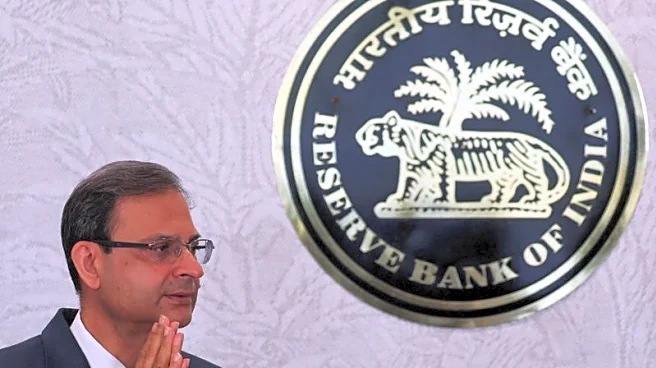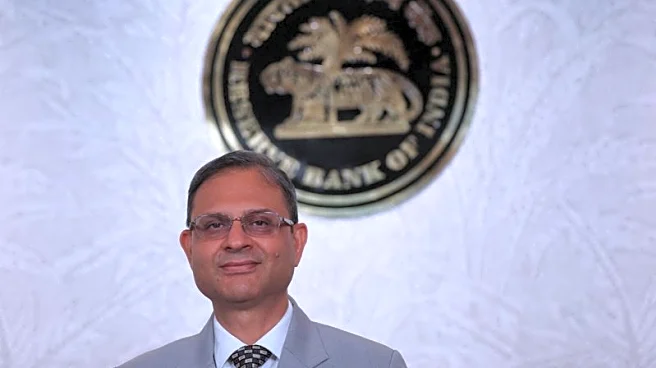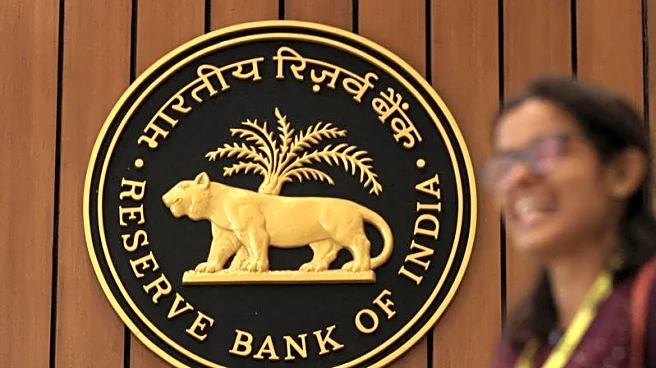What is the story about?
What's Happening?
The Reserve Bank of India (RBI) has decided to maintain its policy rate at 5.5%, aligning with economists' expectations. This decision comes as the central bank evaluates the impact of previous rate cuts and considers the effects of global trade uncertainties. Inflation in India has moderated, but growth is expected to slow in the latter half of the financial year. The RBI's decision reflects a cautious approach, given the limited room for future rate cuts and the need to assess the impact of recent goods and services tax reductions.
Why It's Important?
The RBI's decision to hold rates steady is significant as it reflects the central bank's strategy to balance economic growth with inflation control amidst global trade challenges. The U.S. tariffs on Indian imports have added pressure on India's export sectors, potentially affecting job creation and economic stability. By maintaining the current rate, the RBI aims to provide stability while allowing previous policy measures to take effect. This decision also highlights the importance of domestic consumption in India's economic framework, as it accounts for a significant portion of GDP.
What's Next?
The RBI will continue to monitor economic indicators and global trade developments to determine future policy actions. The central bank's cautious stance suggests that any further rate cuts will be carefully considered, taking into account the evolving economic landscape. The impact of U.S. tariffs and domestic policy measures, such as the GST cuts, will be key factors in shaping India's economic trajectory in the coming months.
AI Generated Content
Do you find this article useful?














